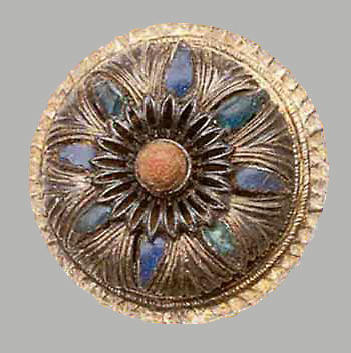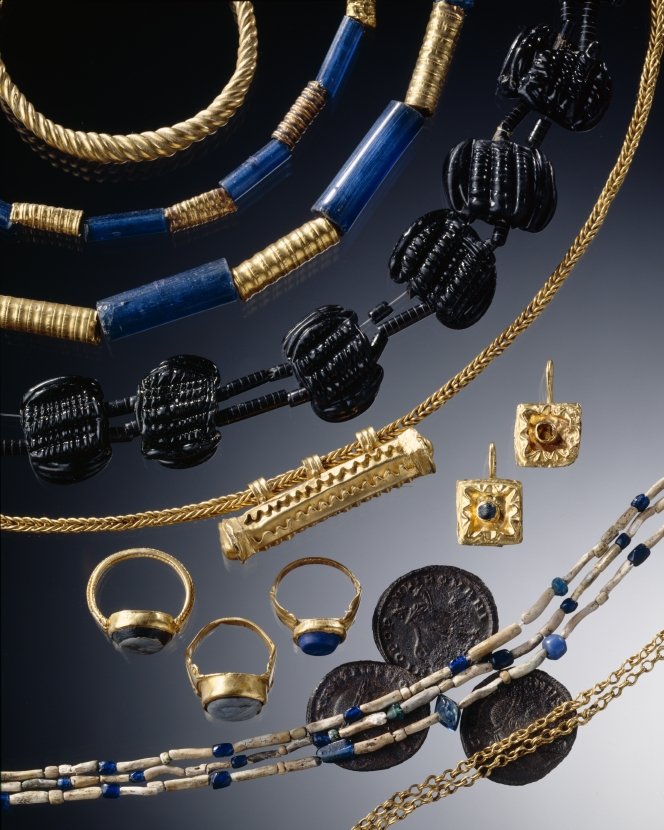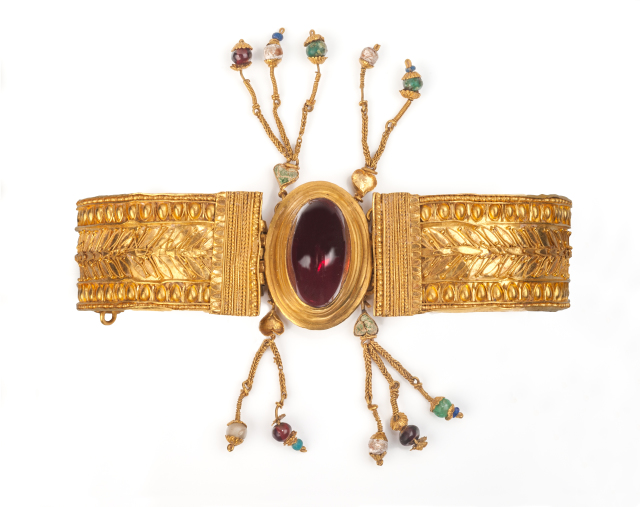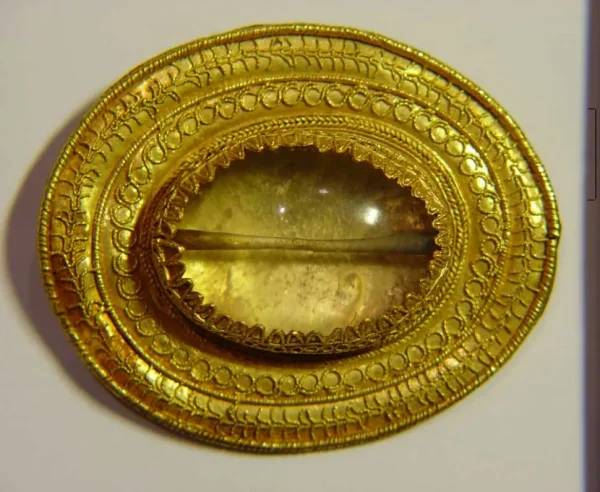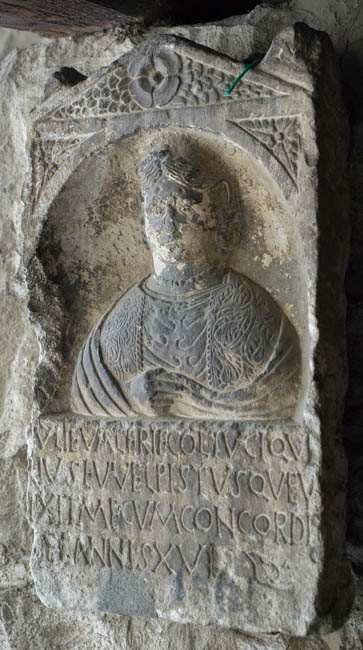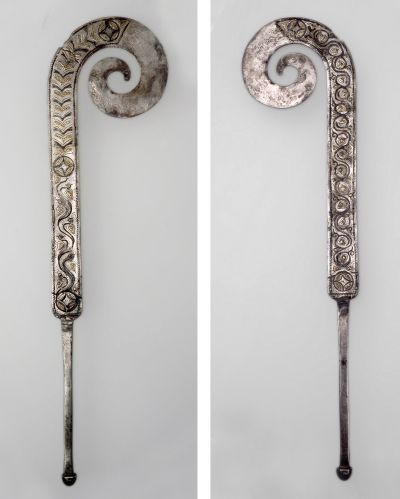


Silver augur staff (lituus) with niello inlay, front and back (Photo: © Hungarian National Museum)
length: 33.1 cm
Dating 3rd/4th century
“The silver staff that was discovered in a stone sarcophagus to the south of the military fortress Brigetio (Komárom-Szőny) is considered a unique find from the Roman Empire. Similar staffs were used by the augurs, oracles studying the flight of birds when making predictions and appointing locations for temples. The priestal insignia must have been placed as a part of the grave goods in the sarcophagus, because the deceased was probably the last augur in the town. The 33-cm-long staff with a spiral top is richly decorated with scrolls, leaves and geometric motifs inlayed with dark niello (silver sulphide) and gold on both sides. A gilded and niello-decorated crossbow fibula with onion-shaped finials ( a brooch for clasping garments), to which textile shreds were attached, was found by the right shoulder of the deceased. The augur staff and the fibula must have made up a set.” [source]
Hungary Museum Inv. no. 58.12.33 [record]
“A flat silver stick (so-called augurbot – liskus) with a disputed function, but certainly of cultic purpose, was found in a cemetery between a Roman camp in Brigetio and a military town. The tapered end of the stick of rectangular cross-section curls helically. Both sides are decorated with niello inserts and gilding. In a serrated niello frame on one side, two four-leafed, gold-studded rosettes show undulating spiral-looped tendrils to which punctured and then gilded leaves are attached. On the other side, a similarly serrated niello frame housed three four-petalled, spaced-apart gold-inlaid rosettes, including amber spirals and palm leaf leaves.”

The late Roman silver augur staff (lituus) decorated with niello inlays and gold foil appliqué (photo: A. Dabasi, Hungarian National Museum) and different types of niello inlays of the augur staff based on the SEM–EDS and μ-XRD results. [source]

